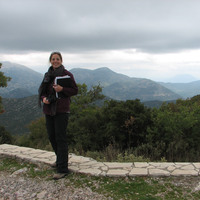
Tuesday, October 11, 2016 - 1:00pm
Room 330 Penn Museum
Dissertation Defense - Amanda (Reiterman) Anjelly (AAMW)
"Keimêlia: Objects Curated in the Ancient Mediterranean (8th-5th centuries B.C.)" - Professor Ann Brownlee, Advisor
Abstract:
Archaeologists occasionally encounter artifacts that might be described as “curated” in antiquity either because these objects significantly predate the other items in their assemblage or exhibit ancient repairs. While easily overlooked or dismissed as residual, these anomalous artifacts have the potential to inform us about the intimate relationships between people and things in antiquity and ancient attitudes toward the past. This dissertation develops an interdisciplinary approach to identifying and interpreting such artifacts, referred to here by their ancient Greek name—keimêlia, meaning valued things that were kept or stored for extended periods. The corpus of keimêlia gathered for this investigation is drawn primarily from 8th to 5th century B.C. contexts across the Mediterranean, and encompassing the Greek heartland, colonies, and non-Greek communities. This broad chronological and geographic scope reveals a spectrum of behaviors toward old or damaged objects in diverse cultural contexts. Case studies focusing on individual keimêlia explore how archaeologists might disentangle the motives for ancient curation (e.g. function, economics, aesthetics, and sentiment) and recognize the nuanced roles of keimêlia as companion objects, mementoes, heirlooms, entangled objects, antiques, and found objects. Comparative archaeology, ethnographic research, and modern consumer studies place keimêlia within a larger framework by illuminating parallels in the attributes of objects from the past and their uses, including the assignment of magical or mythic significance to things from remote antiquity, the recurrent association of children with older objects, and the frequent curation of nonlocal or rare objects. These intersections suggest that the potential meanings of objects from the past—as talismans, mechanisms for articulating layers of a person or group’s identity, and mnemonic apparatuses—are related to different types of distance: temporal, cultural, and interpersonal. Although portable objects have been largely neglected in the recent wave of scholarship examining memory in the ancient Mediterranean, the study of keimêlia indicates that people here did, in fact, use objects to map their personal histories and to negotiate the place of that past in their present.

